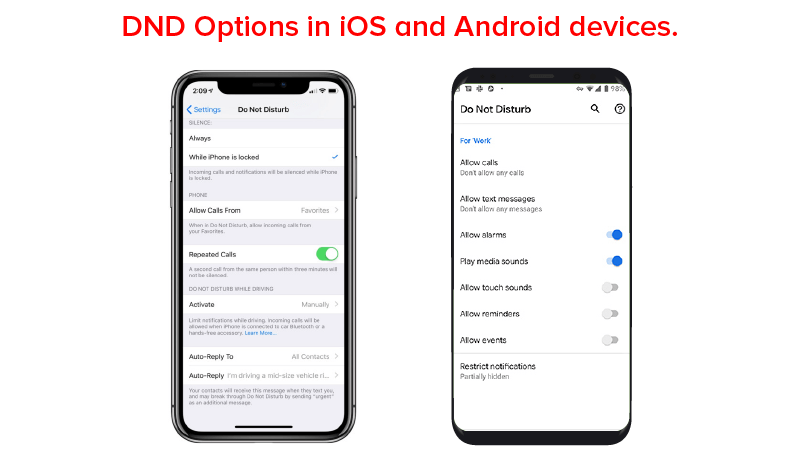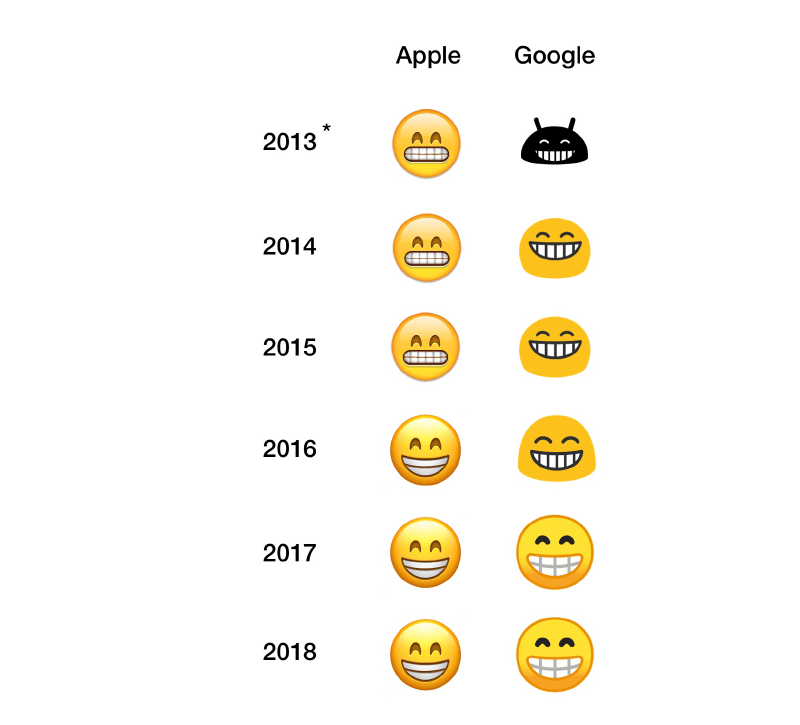As the world of mobile devices is flooded with new applications on mobile devices, user demand for more innovative features is increasing. All mobile operators need to introduce the WOW factor into their operating systems to capture the market's attention.
In this constant race to attract target audiences with convenience and innovation, Google and Apple often draw inspiration from each other's ideas and features. They have proven time and time again that they pick the best features from each other and bring them to their devices. Remember when Tim Cook said he trusted Google Search? This mutual inspiration is something that is still practiced in 2019.
While we've heard a lot about the features that Apple copied from Google's Android, today we wanted to take a look at the other side of the coin. This means that the features Google cloned from Apple's iOS in 2019 and earlier. Features that have traditionally played an important role in determining the cost of Android mobile app development.
Android Features that Have Been Inspired from Apple
1. Fast Sharing Feature
Google introduces ‘Fast Share’ feature on Android devices that works similarly to Apple's AirDrop. This feature will combine Wi-Fi and Bluetooth to send files, URLs and snippets of text to people nearby.
However, there will be differences. Unlike AirDrop, forwarding won't be limited to your contact list and devices. You'll be able to share files with anyone using Chromebooks, iOS smartphones, and Android OS smartwatches.
2. Battery Saving Features
Google has announced that battery saver mode will be one of the core features of Android Q when it ships in 2019. When the battery reaches 90%, this feature will automatically turn off power saver mode. Similarly, when the charger is disconnected, it will turn on the power saving mode again.
This is again a very similar feature to iOS Low Power Mode, where the battery saver option is automatically disabled when the iPhone is charged to 80%.
3. Facial Recognition
The ability to unlock devices and applications using facial recognition, or more precisely Face ID, is again a feature that Apple brings to the market. They first introduced the idea of scanning faces for authentication, which is now a mainstay on Android devices.
In fact, according to the sources, Android Q will have an advanced level of facial recognition that will challenge the capabilities of Apple Face ID.
4. Native AR
Google has proven to be the best in the market when it comes to testing many augmented reality based features on smartphones and other devices. They bring a variety of new options to the market when it comes to AR technology. In a recent test, according to sources, Google is introducing AR effects into the Messages app to make it competitive with Apple's iMessaging app.
However, Apple has taken the first step to integrate augmented reality into the mobile world and give us the best of both worlds.
5. DND (Do Not Disturb)
Again, Apple has introduced the idea of making the DND (Do Not Disturb) process accessible and visible to the user. They have taken the first step by allowing users to customize and manage DND activities. Google has just followed in Apple's footsteps by giving Android users the freedom to give them peace of mind in meetings and similar situations.

6. Gesture Controls
The gesture control we enjoy on Android devices is also one of the features copied from Apple devices. It was Apple who abandoned the home button and introduced the idea of using gestures to operate the device. And now Google has launched this feature in the Android market.
7. Emojis
Not just the specs, but Apple also proved to be the first in the market to make the app experience enjoyable. They came out with a lot of realistic emojis in the beginning. As we all know, every year Google tries to improve its emoji to match Apple's emoji

8. App Store Features
Requiring the user to make a one-time and all-or-nothing request before installing an app is an old Apple approach. Now Google is also introducing Apple features into apps that, for the first time, ask users for permission to access the camera or other similar features.
9. Performance Improvements
Once again, Google turned to Apple to figure out how to deliver great performance and user experience to its target audience.
Like Apple, Google has also started neglecting legacy hardware support to curtail the efforts of Android app developers to make their apps available on all devices. In this way, the tech giant has found a solution to the challenge of platform fragmentation, while ensuring that performance is not compromised.
Bonus: Ecosystem
It was Apple who came up with the idea of creating an ecosystem where all Apple products work synchronously with each other. They pioneered the concept of creating synergies between branded products and services to ensure users never leave the ecosystem and ROI numbers stay the same.
Google recently adopted the concept of linking all its services to encourage users to use its services, thereby directly or indirectly increasing its profits.
These are some of the core features of Apple's iOS that came before they were implemented in the Android market, making the two platforms somewhat similar.




Post a Comment
Hey... say something!